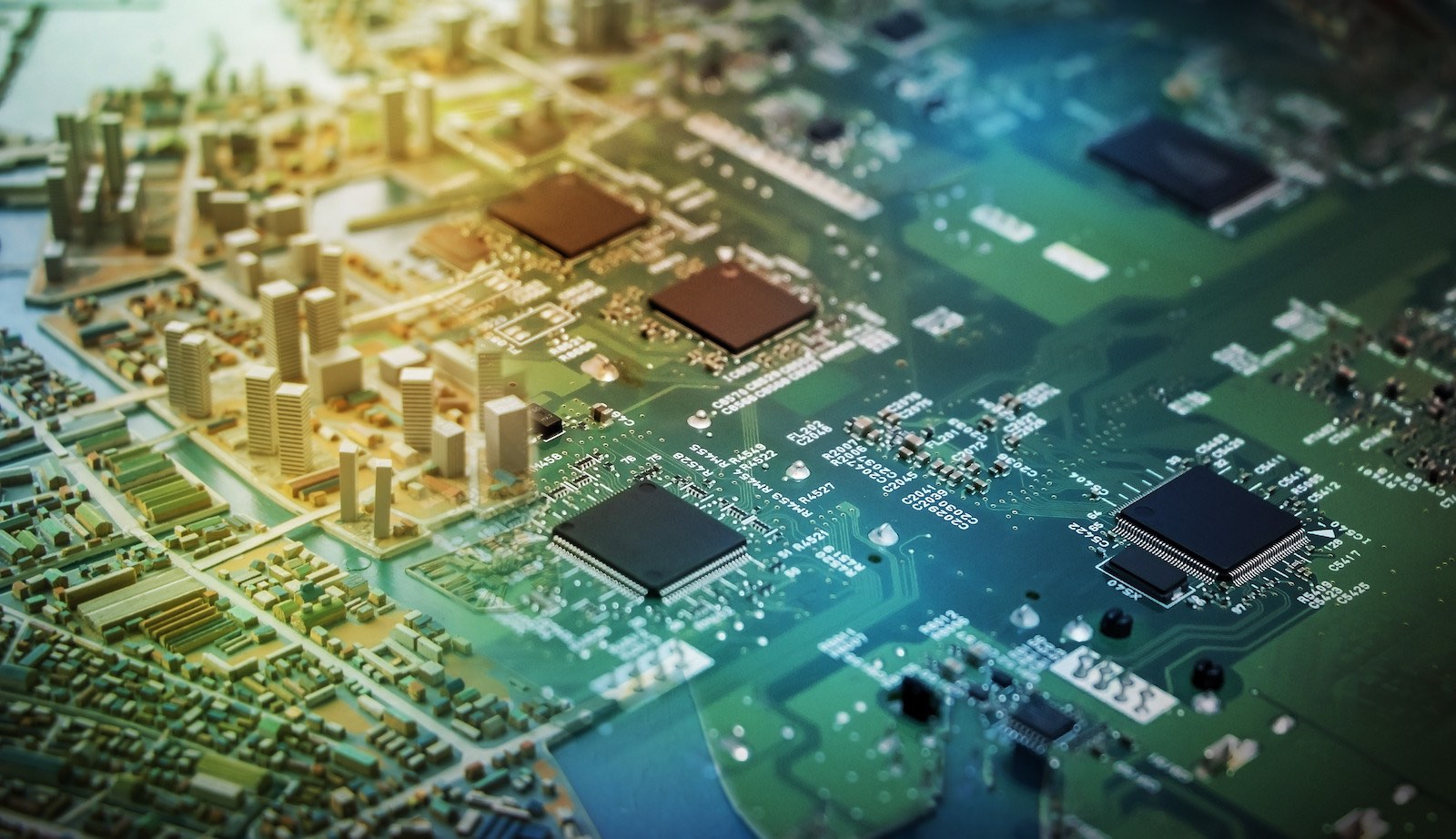Picture a modern city at night, viewed from directly above. Reminiscent of a circuit board with different electronic components (buildings) connected by conductive tracks (roads) to create one functioning entity from many smaller elements. Signals (people) travel along defined copper traces (roads) to deliver information and instructions to different parts of the circuit board. This represents the traditional city.
Now imagine a circuit board where conductive tracks are multiplied exponentially, every element is connected to each other in multiple ways sending information almost instantly anywhere or everywhere simultaneously. This creates a highly complex, highly functional entity able to adapt in real-time to optimize performance and create new abilities. This represents the smart city.
Smart cities are all about connectivity, not just from a technical perspective but also from a socio-economic perspective. They connect people with people, businesses with people, businesses with businesses, businesses and people with utilities, authorities with utilities and people and businesses… and I think you get the point.
This heightened level of communication and information transfer creates efficiency and opportunity. Sensors embedded in roads, traffic lights, streetlamps and vehicles, for example, allows us to optimize traffic flows, providing untold benefits to urban society, the economy and the environment. Sensory transport developments are now also creating the opportunity for driverless cars, which are set to revolutionize urban life.

Furthermore the smart city will use connectivity to provide new modes of healthcare, green initiatives, energy use and resource savings, enhanced waste management, increased safety, easier access to knowledge and better democratic processes.
Through open big data anyone can benefit from the mountain of information constantly streaming in from a plethora of sources across highly connected smart cities. A smart city’s collective intelligence harnesses the power of competition and collaboration to drive the city forward as a whole.
Much like in a shopping mall, where various retailers share a space to collaborate in attracting customers, then compete over their business. A smart city allows its citizens to collaborate over information gathering while maintaining the competitive environment that drives urban centers in our capitalist world. Open big data breaks down the silos that currently limit our collaborative potential and replaces them with unprecedented networking potential that expand our horizons.
“In the new smart city, leaders from across all different sectors–public and private enterprises, philanthropic organizations, and non-profits–can leverage their collective influence and mutual interests to bring about change and increase their city’s business value. It’s the new economy of collaboration, and in my opinion, it’s exciting,” says Daniel Newman, Principal Analyst at Futurum Research and CEO of Broadsuite Media Group.
Moving into this new age is not as simple as just providing the technology however, it requires a new attitude towards collaboration. It needs a progressive and forward thinking approach to collaboration. Consider the emergence of co-working spaces, for example, this millennial generation – start-up era movement is a sign of things to come in our smart cities.
The co-working space concept accepts that competing or unrelated organizations can benefit from sharing. In its simplest form, these co-located businesses benefit from cost savings and enhanced facilities they could never achieve on their own. Going further, the co-working concept embraces the idea that by simply sharing space, data, and ideas, opportunities will emerge for the benefit of everyone involved.
“Thinking of your competitors as future collaborators does require a mindset shift, however, it is one that will help businesses to survive and thrive in the smart cities of tomorrow,” suggests Newman. “The organizations that don’t get on board and stick with an old-school “us vs. them” game plan will miss out on the forward-thinking partnerships and innovative ideas that will surely power the rest of the smart city.”
The smart city is like a new form of circuit board, one in which different elements offer and welcome connections wherever they may materialize. Those who fight this new system, keeping connections to a minimum, will surely be left behind. While those who embrace it with open data will drive us into this smart urban future.
[contact-form-7 id="3204" title="memoori-newsletter"]



